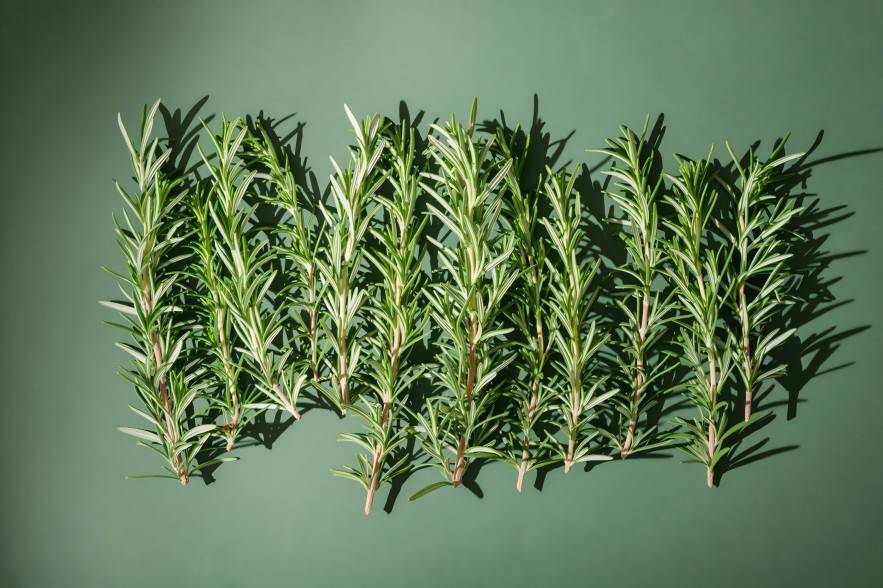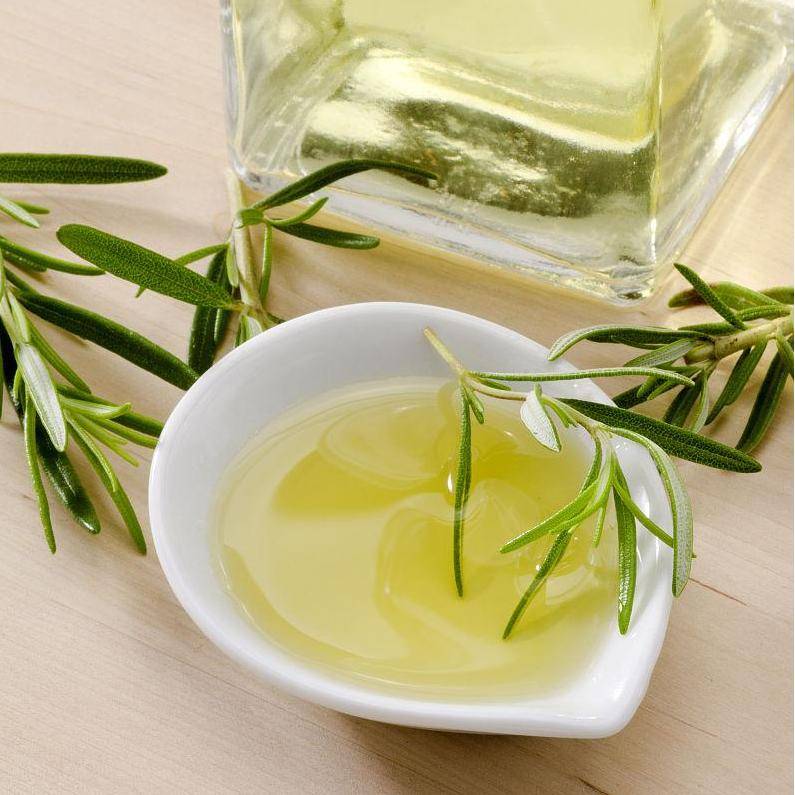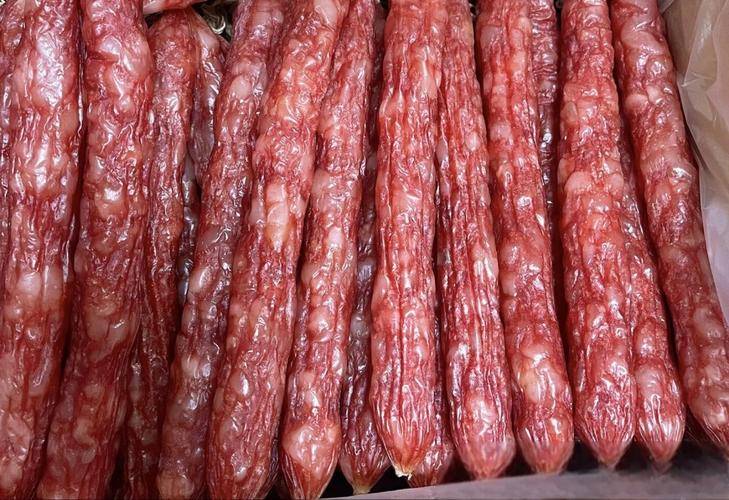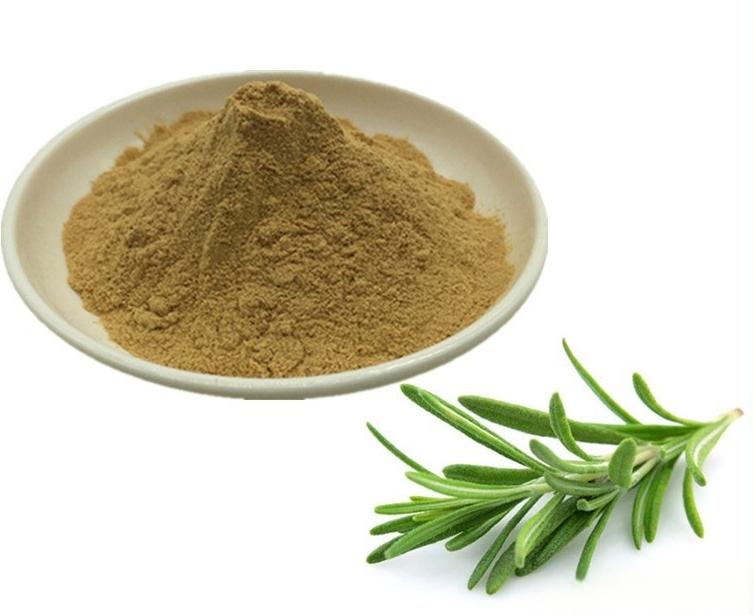食品用ローズマリー抽出物の応用
要旨:ローズマリー抽出物は、有効な抗酸化剤、広域抗菌剤、高温非劣化、消費のための安全な優れた特性を持っている、肉製品などの食品産業で抗酸化剤や防腐剤として使用することができます。本論文では、鮮度保存品質強化効果で要約する異なる肉類、また、ローズマリーから抽出したエキスとローズマリーエキスの相乗効果を他の自然抗酸化物質またはストレージ環境は指摘を提供するために資料のアプリケーションに関する研究ミート制品のご绍介です。また、ローズマリーから抽出したエキス
肉類は、人間の生活に欠かせない食品の一つですが、肉類には脂肪やタンパク質が豊富に含まれており、水分活性も高いため、加工、保管、輸送などの過程で腐敗や腐りやすくなります。食肉製品の品質を確保するため、抗酸化剤や防腐剤がよく使われているが、合成抗酸化剤や化学防腐剤の安全性が疑問視されている。
At present, more and more scholars have begun to pay attention to the study of natural antioxidants and preservatives, and the selection of a kind of antioxidant and preservative from a wide variety of natural plant sources that can make the sensory quality of meat products achieve the desired effect has become one of the research tasks of many scholars[1] . Rosemary extract contains phenols, acids, flavonoids and other major components, which have superior antioxidant properties, and its antioxidant properties are even better than those of phenolic compounds alone[2] , and at the same time, rosemary extract affects the permeability of bacterial cell membranes, protein metabolism, and DNA replication, and disrupts the bacterial metabolism, so as to exert a certain bacteriostatic effect[3] . Adding rosemary extract to processed meat products can not only delay the oxidation reaction in meat products, but also inhibit the growth of microorganisms. Therefore, rosemary extract has a broad application prospect as a natural antioxidant and preservative in the study of meat products.

1つ前はローズマリー
Rosemary (Rosmarinus officinalis L.) is native to the Mediterranean region, and was first successfully introduced in 1981 in the Beijing Botanical Garden of the Institute of Botany of the Chinese Academy of Sciences, and is now planted on a large scale in many parts of China. Rosemary has been attracting much attention as a medicinal herb and spice, and has various physiological functions such as antioxidant, antibacterial, anticancer, anti-inflammatory, and aging delay. In recent years, researchers have devoted themselves to the study of the high antioxidant properties of rosemary and the analysis of its components. The antioxidant properties of 30 spices on lard were determined by the active oxygen content (AOM) method, and it was found that rosemary and sage had the best antioxidant properties. The antioxidant properties of rosemary extract were comparable to those of butyl hydroxy anisd (BHA) and butylated hydroxy toluene (BHT) to a certain extent. The main antioxidant components in rosemary extract are rosmaric acid (Figure 1a), rosmanol (Figure 1b), carnosic acid (Figure 1c) and carnosol (Figure 1d), and their antioxidant effects are closely related to the total polyphenol content [4]. It is now widely believed that the antioxidant effect of rosemary is due to its ability to block the chain reaction of lipid auto-oxidation, scavenge free radicals, burst singlet oxygen, and integrate the synergistic effect of metal ions or organic acids [5].
2ローズマリー抽出技術
The existing extraction techniques of rosemary include organic solvent extraction, steam distillation, microwave extraction, ultrasonic extraction and supercritical CO2 extraction (SCDE). In the study of microwave-assisted extraction of rosemary volatile oil, the extraction rate reached 4.05% when the microwave power was 500 W, the processing time was 125 s, and the material-liquid ratio was 12.3 mL/g[6] .
従来の有機溶媒抽出法や水蒸気抽出法に比べ、マイクロ波を利用した抽出法の方が効果的です。近年、超音波抽出とscdeは研究者から大きな注目を集めています。wang chunyanら[7]は、超音波抽出法を用いてエソからローズマリー酸を抽出し、抽出温度が抽出速度に最も大きな影響を及ぼすことを示した。
ge hongshangら[8]は、応答面法を用いて超音波抽出に最適な条件を求めた:エタノール体積分率72.29%、物質-液比1:10.05 (m/ v)、超音波時間51.27分、超音波出力200.55 w。最適な条件下では、サルビア・ディビノラムとロスマリン酸の総収率は2.7%に達する。zhang wenchengら[9]は、scde技術を用いてローズマリー精油と抗酸化物質を一段階で抽出し、得られた精油は抗酸化活性成分を多く含む純粋な品質であった。bi liangwuら[10]は、scde技術を用いてローズマリーから抗酸化物質を抽出し、平均抽出率は11.93%であった。Le Zhenqiaoら[11]の研究を行いを抽出するプロセス抗酸化物質ローズマリーからSCDE、と定めた最適なプロセス抽出条件は抽出されなかったやかん40 MPaの力で80℃の温度、水20%に加え、抽出時間2.5 h最適な条件の下で、製品の石高の集計は7.2%を受けた。

3食品用ローズマリー抽出物の応用
3.1肉製品中のローズマリー抽出物の抗酸化および防腐効果
3.1.1ソーセージ製品への適用
ソーセージ肉製品は、挽肉と動物性脂肪を塩、砂糖、発酵剤、香辛料などで混ぜた後、ケーシングに入れ、微生物によって発酵させ、安定した微生物学的特性と典型的な発酵味を持つ肉製品を生産する。光や酸化による保存中の劣化や変色の影響を受けやすいため、天然の抗酸化物質としてローズマリーエキスを添加することができます。sebranekら[21]は、ローズマリー抽出物、bhaおよびbhtの豚肉ソーセージに対する抗酸化作用を比較し、豚肉ソーセージの貯蔵中のチオバルビツール酸反応物質(チオバルビツール酸反応物質)を測定した。また、貯蔵中のポークソーセージのチオバルビツール酸反応性物質(tbar)と見かけの色も測定し、知覚的に評価した。
The results showed that the antioxidant effect of rosemary extract at 2 500 mg/L during the storage of pork sausage was comparable to that of BHA and BHT. The TBARs of precooked frozen sausages with rosemary extract, BHA and BHT remained low during storage, and the TBARs and color changes of raw frozen sausages with rosemary extract were significantly lower than those of raw frozen sausages with BHA and BHT. Wei-Wei et al. [22] conducted a study on the color change of emulsified sausages during storage with natural antioxidants, and the results showed that the brightness (L*), redness (a*), and yellowness (b*) of the sausages were maintained at a stable level with the addition of rosemary extract, and the color change of the sausages was slowed down effectively. Jongberg et al[23] showed that both green tea extract (500 mg/L of total phenolic compounds) and rosemary extract (400 mg/L of total phenolic compounds) were effective in inhibiting the increase in TBARs for fat oxidation and carbonyls for protein formation.Nassu et al[24] found that the best antioxidant property of lamb sausage was obtained with 0.05% rosemary. Riznar et al [25] showed that rosemary extract slowed down the oxidation of chicken sausage during storage and inhibited the growth of aerobic bacteria.

3.1.2ハム製品への適用
ハムは新鮮な肉の後足を塩漬けにして燻製にし、発酵させて乾燥させたハム特有の風味を持つ生肉製品です。ハム製品にローズマリーを添加すると、ハム製品の腐敗を遅らせ、肉の色と香りの面でハム製品の品質を向上させることができます。
Sun Wei-Qing [26] investigated the color protection and antioxidant properties of rosemary on ham products by determining the apparent color, pigment content, TBARs of fat oxidation, and carbonyl formation of protein oxidation of beef and pork sliced ham during refrigeration, and the study showed that rosemary in the range of 500-1,500 mg/kg significantly inhibited fat oxidation and degradation of pigment nitrosyl hemochromogen in pork and beef sliced ham. The study showed that rosemary in the range of 500-1,500 mg/kg could significantly inhibit the oxidation of fat and degradation of the pigment nitrosyl hemochromogen in pork and beef sliced hams, and effectively improve the apparent red color of sliced ham. To maintain the effective color protection and antioxidant effects of rosemary, the dosage should not exceed 1,000 mg/kg for beef and 500 mg/kg for pork.Liao, C. et al.[27] sprayed rosemary, ポリフェノール, and VE on the surface of dry-cured hams, and the peroxide values of tea polyphenols, rosemary, and VE were reduced by 21%, 51%, and 23%, respectively, and TBARs were reduced by 23%, and the values of TBARs were decreased by 23%, and the values of TBARs were decreased by 23%, and the values of TBARs were increased by 23%, After 4 months, the peroxide values of tea polyphenols, rosemary and VE were reduced by 21%, 51% and 23%, respectively, and the values of TBARs were reduced by 12%, 57% and 36%, respectively, compared with those of the blank control.
3.1.3マリネ肉製品への適用
肉のマリネとは、生肉にスパイスや調味料を加えて水で煮たもので、柔らかくて風味があり、保存には適していません。ローズマリーの添加は、マリネ肉製品の保存問題を解決することができます。赤ガナら[28]使わないすぐり色」を见分ける醤油牛肉赤い色素、付け加え、ローズマリー、醤油牛肉の汁にクローブやシナモンエキスなどを一人で出汁を利用して醤油の色に浸すのを右手キャリア牛肉後と料理を作るpHの数字が決定赤み値と顔料の残量率醤油産牛肉の貯蔵期間についてorganoleptic評価を行っ醤油牛肉その結果、ローズマリーの色保護効果は、市販の色保護剤群やクローブ抽出物よりも明らかに優れていることがわかりました。その結果、ローズマリーの色保護効果は、市販されているカラープロテクターやクローブエキスに比べて有意に優れていることがわかりました。

3.1.4他の肉製品への応用
Rosemary extract can also be used as a natural antioxidant and preservative in a wide variety of meat products. Liu Qian et al.[29] investigated the microbial changes and antioxidant properties of rosemary, clove and cinnamon extracts in refrigerated beef meatballs with BHA as a control, and the results showed that among the three spices, rosemary had the best antioxidant properties, but its antioxidant properties were slightly worse than those of BHA. Yin Yan et al.[30] showed that the extract of rosemary inhibited fat oxidation and microbial growth in cooked pork patties, and improved their color and texture to a certain extent. Nissen et al.[31] demonstrated that the addition of rosemary extract to cooked pork patties had better antioxidant properties than grape skin, tea and coffee extracts. Doolaege et al[32] demonstrated that rosemary extract was effective in delaying lipid oxidation in pork liver pâté, and the antioxidant level and color stability of pork liver pâté did not change significantly when the addition of rosemary extract was accompanied by a decrease in the amount of sodium nitrite from 120 mg/kg to 80 mg/kg.
3.2肉製品の抗酸化物質とローズマリー抽出物の相乗効果
単一の抗酸化物質の抗酸化特性は限られており、しばしば肉製品の抗酸化要件を満たすことはできません。ローズマリー抽出物といくつかの天然の抗酸化物質の抗酸化剤の組み合わせは、強力な相乗効果を持っており、肉製品の鮮度、色保護、細菌抑制、風味変化を保存するのに有効であることが示されています。Djenaneら[33]捜査に関連してVCの抗酸化効果α-tocopherol、タウリンローズマリーに抽出ステーキです。
ローズマリーエキスの抗酸化組み合わせは、VCが见つかっ最も有効なミオグロビンの酸化減速脂质代peroxidationαの組み合わせの抗酸化作用-tocopherol VCよりステーキが著しく低いが他の2つの組み合わせである。georgantelisら[34]によると、ポークソーセージの賞味期限は、ローズマリーエキスとキトサンを添加したポークソーセージの約2倍で、抗酸化物質の配合による抗菌作用と抗酸化作用が優れている。sanchez-escalanteら[35]はまた、ローズマリーとアスコルビン酸の組み合わせが、牛肉パティの脂肪酸化過程を遅らせるのに有効であることを示した。これらの結果は、天然の抗酸化物質と組み合わせたローズマリー抽出物の抗酸化作用が、肉の用途に大きな可能性を秘めていることを示唆している。
3.3肉製品の異なる包装方法とローズマリー抽出物の相乗効果
ローズマリー抽出物の肉製品に対する抗酸化作用は、さまざまな保管方法によって強化することができます。ying, lisa et al.[36]は、酸素調節包装と組み合わせたローズマリーとローズマリーが豚肉の色安定性と抗酸化特性に及ぼす影響を調査し、ローズマリーの豚肉に対する抗酸化と色保護効果が酸素調節包装によって影響を受けることを示した。ローズマリーと酸素制御包装の組み合わせは、豚肉の脂肪の酸化プロセスをより効果的に遅らせることができます。李大浩らイ・デホ=【37】昔、隔離大豆タンパク質電源オフローズマリーとタンパク質積極的な映画効果があるか调べタンパク質の色が変わると抗酸化安定を描く新鮮な豚肉高oxygen-conditioned下包装やという研究結果を、タンパク质映画の抗酸化作用著しく増加しウォーターで埋め込む事がローズマリーをパッケージ豚肉高oxygen-conditioned下。parksら[38]は、ローズマリーが酸素処理された包装肉製品の脂質酸化を阻害する可能性を示した。huoら[39]は、ローズマリー抽出物と真空包装の組み合わせが脂肪酸化による豚肉の品質劣化を抑制するのに有効であることを発見した。seydimらは、分離された卵白フィルム包装が、食肉製品中のローズマリー抽出物の抗菌活性を高めることを示した[40]。
4結論
食品の安全性は、最も一般的な関心事の一つであり、消費者は、グリーン、自然、無公害の健康食品を求めています。ローズマリー抽出物は抗酸化と抗菌作用があり、非毒性で無害であることが証明されており、天然の抗酸化物質資源であり、大きな発展の可能性と広い市場の見通しがあります。ローズマリーエキスは、脂肪とタンパク質の酸化を遅らせるだけでなく、肉製品の微生物の成長を抑制するだけでなく、肉製品に一定の風味を与え、色の安定性を維持することができます。
同時に、肉製品におけるローズマリー抽出物の適用にはいくつかの制限があります。第一に、ローズマリーの有効成分の抽出、分離、精製に関する現在の研究は完璧ではなく、肉製品中のローズマリー抽出物のコストが高くなります。第二に、ローズマリー抽出物の肉製品に対する抗菌・防腐効果に関する研究は比較的少ない。最後に、ローズマリー抽出物の有効成分、構成関係、作用機序はまだ不明である。ローズマリーを肉製品に応用するための理論的基礎を確立するためには、ローズマリーに関するより深い研究を行う必要があり、ローズマリーの医学的、保健的価値も考慮することができます。今後、ローズマリーは食肉製品にも広く使われることが期待されている。
参照:
[1] karre l, lopez k, getty k j k, et al。肉および家禽製品中の天然抗酸化物質[j]。^ a b c d e f g h i(2013年)、224 -227頁。土井:10.1016 / .meatsci.2013.01.007。
[2] hernandez-hernadeze, ponce-alquicicae, legarreta g i, et al。抗酸化効果ローズマリー(rosmarinus officinalis l .)とオレガノ(origanum vulgare l .)モデル生豚肉の豚の豚のtbarと色の抽出物[j]。2009年肉科学、81(2):410-417。土井:10.1016 / j.Meatsci.2008.09.004。
[3] sun ruyi, wang jingchao, li hongtao, et al。ローズマリン酸の抗菌機構に関する研究[j]。小学館、2005年、18(4):41-45頁。
【4】張恵允、孔宝華、孫旭。香辛料エキスの抗酸化活性と作用機序[j]。^ a b c d e f g h i(2010)、111-115頁。
【5】史靖、王金美。天然抗酸化ローズマリーの動物性食品への応用[j]。 ^ a b c d e f g h i(2009年)、23 - 23頁。
[6]王Nai-Xinです。 ローズマリーからの電子レンジによる揮発性油の抽出[j]。 ^『官報』第2829号、大正9年(1920年)8月29日。
[7] wang chunyan, liu aiwen, chen xin, et al。超音波法によるエゴマからのローズマリン酸抽出条件に関する研究[j]。2010年広東化学工業、37(11):たまま終えた。
[8] ge hongshang, yao huanhuan, zhang rongrui, et al。超音波補助ローズマリン酸とロスマリン酸の同時抽出[j]。2012年(平成24年):3-6号線開業。
[9] zhang wencheng, zhang haitao, zheng renjuan, et al。ローズマリーの精油と抗酸化物質の抽出と成分分析[j]。ローズマリーから精油と抗酸化物質の抽出と成分分析[j]。^島田(2011),22(11):2723-2725。
[10] bi liangwu, zhao zhendong, li dongmei, et al。超臨界co2抽出法によるローズマリーからの抗酸化物質とエッセンシャルオイルの総合抽出[j]。2007年林業化学、産業、27日(6):8。
【11】楽振橋、劉文美。天然ローズマリーからの抗酸化物質の超臨界二酸化炭素抽出[j]。食品産業科学技術,2010,31(2):283-285。
【12】熊華、麻里、碧芝美ショウガの有効成分の有機溶剤による抽出[j]。 中国醸造、2006年、33(4):86-87。
[13]東温ビンビン、張建華。ローズマリー精油の調製とその化学的・組成的特性[j]。^『日本近代建築史』日本建築学会、1995年(平成7年)、68-73頁。
[14] yang hai lin, lu shi-ying, yang sheng-li, et al。ローズマリーからの抗酸化物質の抽出[j]。natural products research and development, 2002, 14(4): 20-23。
[15] bousbia n, vian m a, ferhat m a, et al。ローズマリーの葉から精油を分離する2つの方法の比較:水蒸留とマイクロ波水拡散と重力[j]。2009年食品化学、114(1):355 - 362。 土井:10:1016 / j.foodchem.2008.09.106。
[16] feng nianping, fan guangping, wu chunlan, et al。マイクロ波抽出技術の漢方薬抽出への応用[j]。^「world science and technology, 2002, 4(2): 49-52」。world science and technology(2002年). 2013年2月4日閲覧。
〔17〕張子平。 多糖研究におけるマイクロ波抽出技術の応用[j]。 ^『仙台市史』通史編(2006)、630-632頁。
[18] herrera m c, castro m d l d。 液体クロマトグラフィーとフォトダイオードアレイの紫外線分離前のイチゴからの超音波によるフェノール成分抽出[j]。^ a b c d e f『川崎市史』、2005年、1- 1頁。土井:10.1016 / j.chroma.2005.09.021。
[19] xing jie, zhang dianrui, zhang xueshun, et al。冬虫夏草からのキチンを超臨界流体抽出法とカラムクロマトグラフィーを併用して調製する新しいプロセスに関する研究[j]。中国薬事学会誌,2005,40(23):1804。
【20】朱開、毛連山、朱信宝。lingzhi vanilla精油の超臨界co2抽出とその化学組成[j]。2005年(平成17年)4月22日:681- 681。
[21]ポークソーセージにおける相対的な抗酸化効果に対する天然ローズマリー抽出物とbha / bhtのsebranek j g .比較[j]。^ a b c d e f g h i(2005) 69(2) 289-296。土井:10.1016 / j.meatsci.2004.07.010。


 英語
英語 フランス
フランス スペイン
スペイン ロシア
ロシア 韓国
韓国 日本
日本




